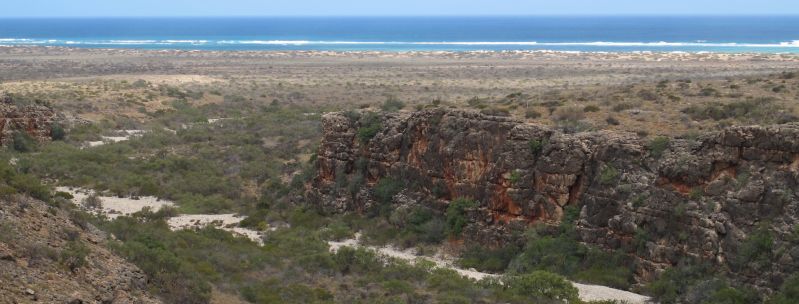Ningaloo Reef & Muiron Islands
Ningaloo is thought to be one of Western Australia’s youngest reef systems, and may only be 7,000-8,000 years old; however, underneath the current reef and within 800m of the coast are the remains of a previous reef system from the last greenhouse phase of the Pleistocene (115,000 years ago). Ningaloo is primarily a hard coral reef with Finger Coral, Staghorn, Porites common in the area, whilst at the top of the Exmouth Gulf around the Muiron Islands, there is a stunning array of colourful soft corals including Gorgonian Fans, sponges such as Callyspongia, Golf Ball Sponge, Mushroom Leather Coral and different species of tree coral.
Cape Range National Park
The Cape Range National Park is located on the west side of the North West Cape and is renowned for its rugged limestone ranges, spectacular deep canyons and pristine beaches that separate the region from the fringing Ningaloo Reef. The area resulted from a huge upward fold of limestone, originally formed below the sea bed. Fluctuating sea levels, wind and water erosion have gouged vast canyons and deposits of eroded material have layered up along the coastal sides of the range.
The range has plateaus to an elevation of 314 metres (1,030 ft). Common Wallaroos, Wallabies, Emus, Echidnas, Perenties are common to the area and the threatened Black-footed Rock Wallaby is occasionally seen on the cliffs at Yardie Creek Gorge. The Cape has extremely rich plant offerings with 630 species of flowering plants with wildflower varieties such as Ashburton Peas, Hairy Pepperflowers, Yardie Creek Morning Glory, Daisies, Wattle, Hibbertia, Native Foxgloves, Sturt’s Desert Pea and Green Birdflowers best seen in winter.

